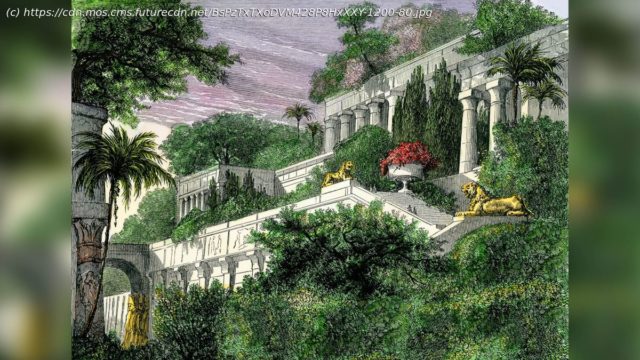The seven wonders of the ancient world include the pyramids at Giza, the Hanging Gardens of Babylon and other exceptional pieces of architecture and art.
The seven wonders of the ancient world were a selection of exceptional pieces of architecture and art in the Middle East, North Africa and southern Europe. A number of ancient and medieval writers from Europe and Middle East debated and described what are today called the seven « wonders » of the world (not all writers used the term « wonder » to describe them). The ancient Greek writer Herodotus, who lived from 484 to 425 B.C., was one of the earliest writers to discuss them, and while his writings on the wonders did not survive, they were referenced in later texts. The wonders that should be included in the list were debated over millennia, with different authors proposing different sites. The list that we have today « only became fixed in the Renaissance, » archaeologists Peter Clayton and Martin Price wrote in the book « The Seven Wonders of the Ancient World » (Routledge,1988). In this gallery, Live Science takes a brief look at each of the seven wonders. The Great Pyramid at Giza, Egypt (Image credit: John Keates / Alamy) The Great Pyramid at Giza is both the oldest ancient wonder on the list and the only one still standing today. It was built as a mausoleum for the ancient Egyptian pharaoh Khufu nearly 4,600 years ago and was the world’s tallest structure until Lincoln Cathedral’s central tower was completed in England in 1311. The Great Pyramid was 481 feet (147 meters) tall when it was first completed, but today, due to the loss of some of its stones, it stands 455 feet (139 m) high. The interior of the pyramid contains a system of passageways leading to a « grand gallery » that travels up towards a room with an empty sarcophagus — often called the « king’s chamber. » Additionally, the passageways in the Great Pyramid lead to two other chambers including what is sometimes called the « queen’s chamber » (although it likely did not hold a queen) and a subterranean chamber located beneath the pyramid. The purpose of these two chambers is a matter of debate. In 2017 scientists scanning the pyramid also detected a large void above the grand gallery that could contain one or more chambers. The Hanging Gardens of Babylon, Iraq (Image credit: North Wind Picture Archives / Alamy) According to legend, the sixth-century B.C. Babylonian king Nebuchadnezzar II had a colossal maze of waterfalls and dense vegetation incorporated into his palace for his wife, Amytis of Media, who missed her lush homeland in Persia. However, archaeologists still debate whether the garden really existed. The gardens were described by several ancient writers. « The approach to the garden sloped like a hillside and the several parts of the structure rose from one another tier on tier, the appearance of the whole resembled that of a theatre, » the ancient Greek historian Diodorus Siculus wrote in the first century B.C. Archaeological excavations at the site of Babylon, located 60 miles (100 kilometers) south of Baghdad in modern-day Iraq, have not succeeded in revealing a site that can be definitively identified as the Hanging Gardens.






